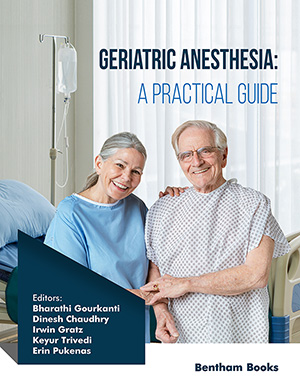Abstract
Background: Accumulating evidence has revealed the important role of Cancer Stem Cells (CSCs) in driving tumor initiation and tumor relapse or metastasis. Therapeutic strategies that selectively target CSCs may be effective approaches to eliminate cancer. Salinomycin, an antitumor agent, was identified as a selective inhibitor of several types of CSCs. We previously reported that salinomycin inhibits the migration and invasiveness of Liver Cancer Stem Cells (LCSCs).
Objective: This study was conducted to explore the role of salinomycin in suppressing the stemness properties of LCSCs and the mechanism.
Methods: LCSCs were identified and enriched from MHCC97H cells. Salinomycin was used to treat LCSCs at the indicated concentrations. Sphere formation ability, chemotherapy resistance, expression of CSC surface markers, Young’s modulus and tumorigenicity of LCSCs were assessed to evaluate the effect of salionmycin on LCSCs. The expression of β-catenin was evaluated by western blotting. LiCl was used to activate the Wnt/β-catenin signaling pathway.
Results: Salinomycin suppresses the stemness properties of LCSCs. Moreover, salinomycin could also inhibit the activation of Wnt/β-catenin signaling in LCSCs. Nevertheless, the stemness properties of LCSCs could be recovered when Wnt/β-catenin signaling was activated by LiCl. Further studies demonstrated that salinomycin also significantly reduces the tumorigenicity of LCSCs in vivo by suppressing the Wnt/β-catenin signaling pathway.
Conclusion: Salinomycin could suppress stemness properties and induce differentiation of LCSCs through the Wnt/β-catenin signaling pathway, which provides evidence that salinomycin may serve as a potential drug for liver cancer therapy targeting LCSCs in the clinic.
Keywords: Liver cancer stem cells, salinomycin, stemness, differentiation, Wnt/β-catenin signaling pathway, liver cancer therapy.
[http://dx.doi.org/10.1186/s12943-016-0572-9] [PMID: 28137313]
[http://dx.doi.org/10.1016/j.semcancer.2014.07.001] [PMID: 25025713]
[http://dx.doi.org/10.1002/hep.22082] [PMID: 18275073]
[http://dx.doi.org/10.1038/nrc1590] [PMID: 15803154]
[http://dx.doi.org/10.1038/nature14034] [PMID: 25470039]
[http://dx.doi.org/10.1073/pnas.1424171112] [PMID: 25605917]
[http://dx.doi.org/10.7164/antibiotics.27.814] [PMID: 4452657]
[http://dx.doi.org/10.1016/j.cell.2009.06.034] [PMID: 19682730]
[http://dx.doi.org/10.1155/2012/950658] [PMID: 23251084]
[http://dx.doi.org/10.1371/journal.pone.0141919] [PMID: 26528725]
[http://dx.doi.org/10.1016/j.tox.2017.04.006] [PMID: 28395993]
[http://dx.doi.org/10.1016/j.cell.2012.05.012] [PMID: 22682243]
[http://dx.doi.org/10.1038/cr.2008.47] [PMID: 18392048]
[http://dx.doi.org/10.1038/nature06835] [PMID: 18385740]
[http://dx.doi.org/10.1038/srep12465] [PMID: 26202299]
[http://dx.doi.org/10.1038/cr.2009.43] [PMID: 19365403]
[http://dx.doi.org/10.1016/j.yexcr.2011.03.007] [PMID: 21402068]
[http://dx.doi.org/10.1016/j.jbiomech.2015.11.007] [PMID: 26627368]
[http://dx.doi.org/10.1016/j.yexcr.2018.12.023] [PMID: 30599139]
[http://dx.doi.org/10.1038/nature07567] [PMID: 19052619]
[http://dx.doi.org/10.1073/pnas.0530291100] [PMID: 12629218]
[http://dx.doi.org/10.3390/cancers8070060] [PMID: 27355964]
[http://dx.doi.org/10.1158/1078-0432.CCR-09-2943] [PMID: 20530697]
[http://dx.doi.org/10.3748/wjg.v22.i13.3547] [PMID: 27053846]
[PMID: 19711346]
[http://dx.doi.org/10.1016/j.actbio.2007.04.002] [PMID: 17540628]
[http://dx.doi.org/10.1007/s10237-006-0046-x] [PMID: 16775736]
[http://dx.doi.org/10.1529/biophysj.104.045476] [PMID: 15722433]
[http://dx.doi.org/10.1016/j.bbrc.2008.07.078] [PMID: 18656442]
[http://dx.doi.org/10.1016/j.nano.2011.05.012] [PMID: 21704191]
[http://dx.doi.org/10.1088/1478-3975/8/1/015007] [PMID: 21301067]
[http://dx.doi.org/10.1038/nrclinonc.2010.196] [PMID: 21151206]
[http://dx.doi.org/10.3390/ijms12031595] [PMID: 21673909]
[http://dx.doi.org/10.1158/1078-0432.CCR-08-0584] [PMID: 18794070]
[http://dx.doi.org/10.1007/s11523-017-0508-3] [PMID: 28664387]
[http://dx.doi.org/10.1053/j.gastro.2010.05.083] [PMID: 20621681]
[http://dx.doi.org/10.1186/1471-2407-12-556] [PMID: 23176396]
[http://dx.doi.org/10.1517/14728222.2011.577418] [PMID: 21486121]
[http://dx.doi.org/10.1016/j.ccr.2010.10.032] [PMID: 21156284]
[http://dx.doi.org/10.1007/s12032-014-0462-1] [PMID: 25731617]
[http://dx.doi.org/10.1016/j.canlet.2016.02.032] [PMID: 26940070]
[http://dx.doi.org/10.1002/jcb.26613] [PMID: 29243835]
[http://dx.doi.org/10.1002/hep4.1196] [PMID: 30027142]






























